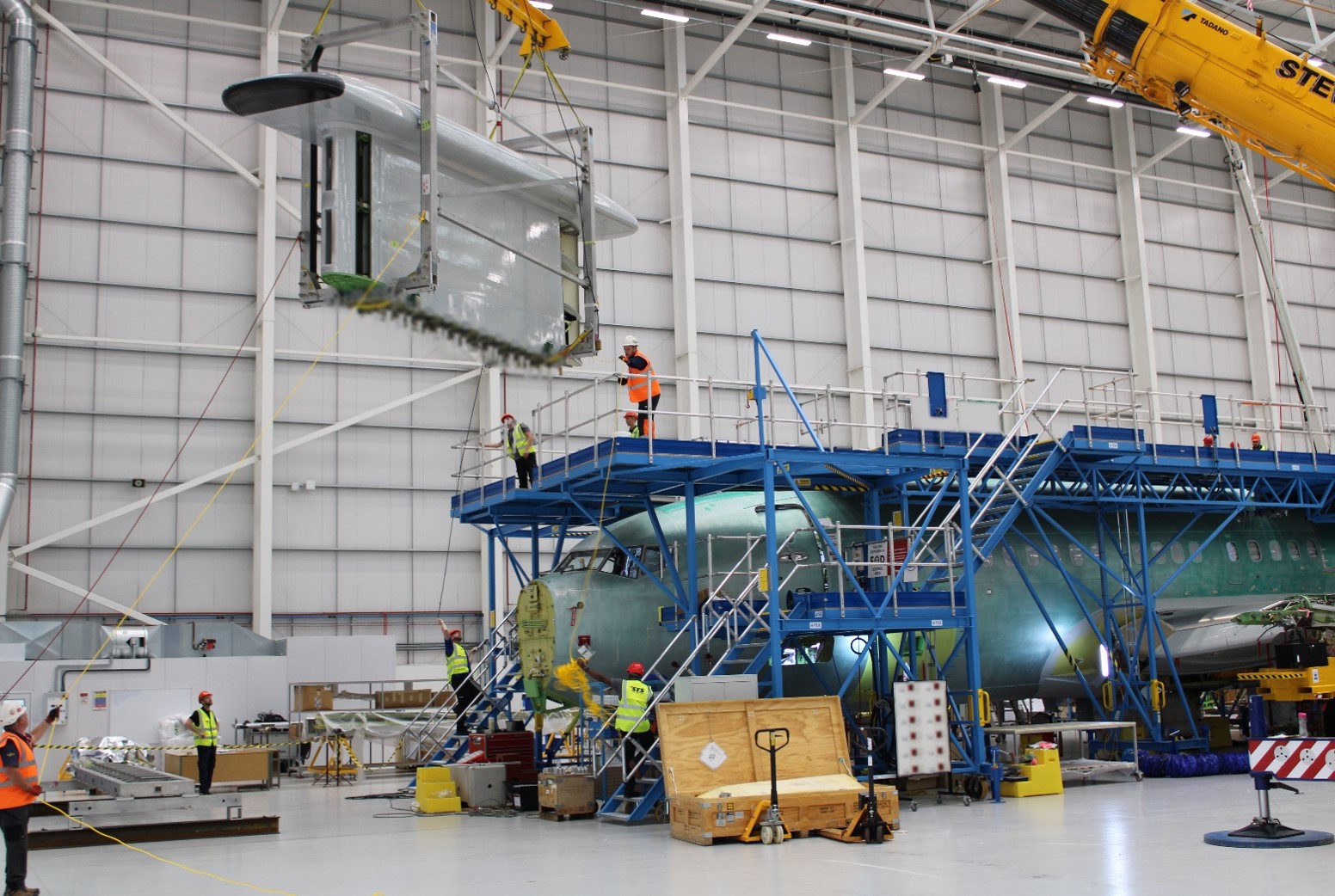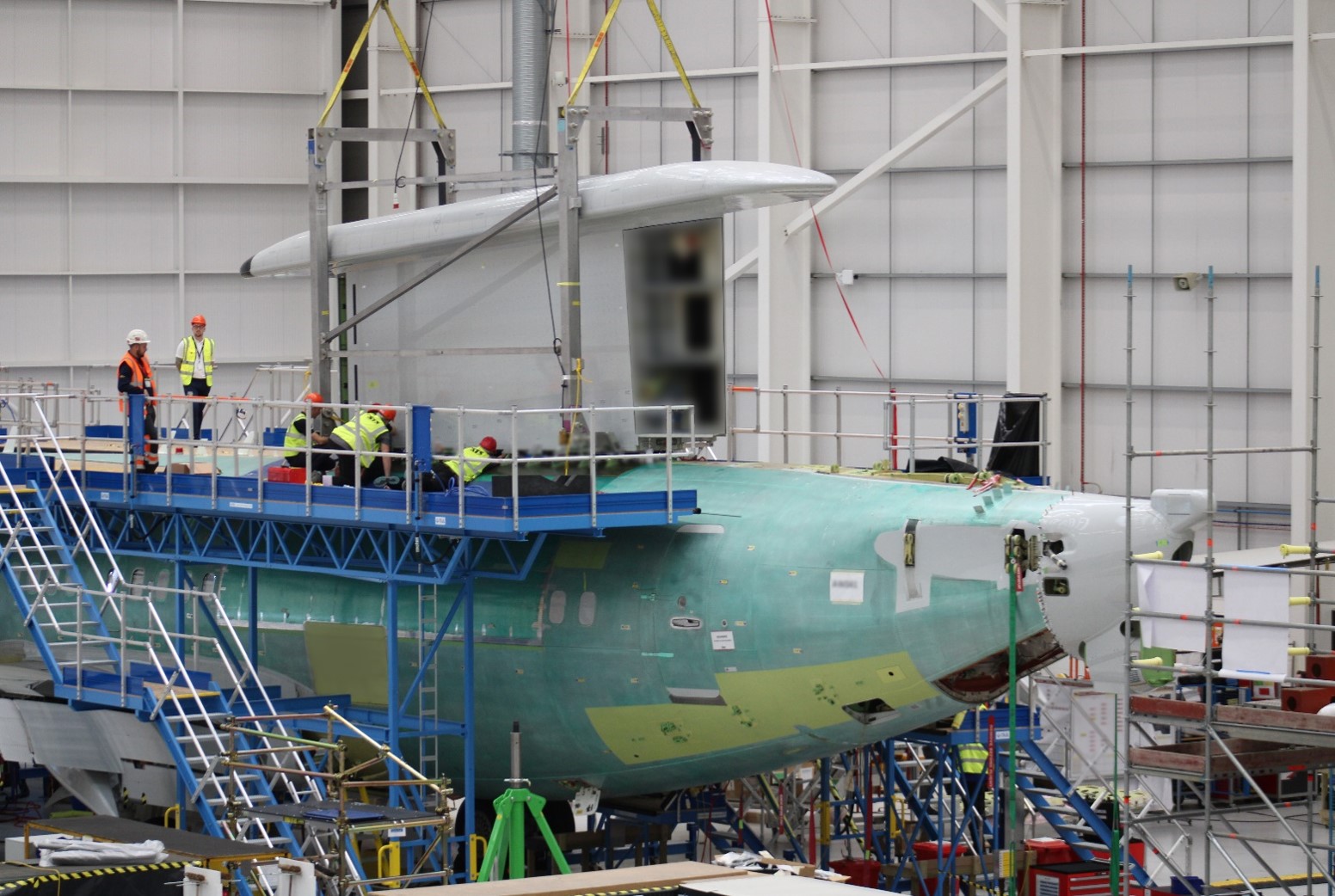RAF’s first E-7A Wedgetail got its MESA radar installed
The Royal Air Force’s first Wedgetail AEW1 (E-7A) airborne early warning and control aircraft is taking shape following the installation of its distinctive MESA (Multi-role Electronically Scanned Array) radar.
The installation of the first advance electronically scanning array sensor – AESA – on the UK’s Wedgetail AEW1 (as the E-7A is called in the RAF) took place at STS Aviation Services’ Birmingham facility. There, a team of 100 highly skilled engineers is working to convert the Boeing 737-700s, previously operated by commercial carriers, to their new military role.
This first Wedgetail AEW1 is being converted from a 737-700 BBJ (Boeing Business Jet) purchased from Boeing, which previously operated for Beijing-based charter carrier Deer Jet.
The changes they are making to transform this aircraft into an advanced airborne early warning and command (AEW&C) system are extensive, but the most obvious and significant is the installation of the MESA radar antenna that allows the E-7A Wedgetail to monitor large volumes of airspace, 360 degrees around.
“This installation of the MESA sensor is a tangible demonstration of the progress being made toward the phenomenal capability of Wedgetail entering RAF frontline service. This highly complex technology is undeniably exposed to the challenges facing global supply chains and I am grateful to all involved in the programme for their continued work and dedication.”, said Air Commodore Hicks, Assistant Chief of Staff Capability Delivery for Intelligence, Surveillance and Reconnaissance aircraft.
MESA
The Wedgetail’s primary and most distinctive sensor is the Multi-role Electronically Scanned Array (or MESA) radar. Developed and manufactured by Northrop Grumman, it is housed in a distinctive fin on the aircraft’s spine. Installed in a reinforced fuselage section to support the extra weight, the sensor will provide 360-degree coverage.

According to the manufacturer, this advanced radar can extend its detection range without having to fly closer to a threat situation. By directing its energy toward the threat, the sensor can nearly double its detection range at the point of emphasis, all while continuing to provide 360° coverage. Compared to other surveillance radars, MESA also has a higher update rate for improved tracking, pushing battle management to the edge of the radar’s surveillance envelope.
This powerful radar system enables tracking of air and sea targets simultaneously, including the ability to revisit high-profile targets at fast speeds. At the same time, MESA provides a fully integrated, world-class, long-range identification, friend or foe (IFF) capability to maintain continuous surveillance of the area of operations.
Wedgetail AEW1
Procured in March 2019 to replace the recently decommissioned E-3D Sentry (one of which was acquired by the US NAVY and three others were ceded to the Chilean Air Force), there were originally going to be five aircraft. But due to budgetary constraints, the final order was cut to just three aircraft.

See also: USAF selects Boeing E-7 Wedgetail to replace its AWACS fleet
In service the Wedgetail’s will be operated by 8 Squadron at RAF Lossiemouth. Several UK-based Boeing suppliers including Leonardo in Yeovil, Thales UK in Crawley, and Hamble Aerostructures in Portsmouth are also providing UK developed technology, materials, skills and services for the aircraft conversion process.

/https://aviacionlinecdn.eleco.com.ar/media/2022/11/MESA-Wedgetail-RAF-scaled.jpg)
Para comentar, debés estar registradoPor favor, iniciá sesión